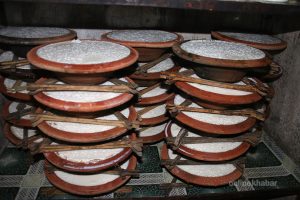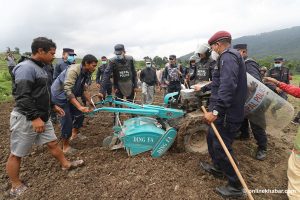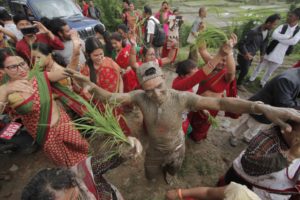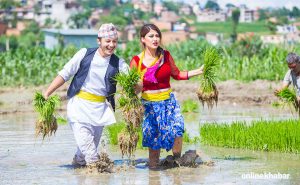Modernisation may now have been the image of the Kathmandu valley, but it still has the same agricultural roots as before. Rural Nepal, however, is still largely agricultural. That agricultural population across the country is not only busy planting rice but even celebrating one of their biggest annual festivals today. Whereas the communities were already commemorating Asar 15 (the 15th day in the third month in the Nepali calendar) as an occasion to be happy for their farming job, the government has begun marking it as the Ropain Diwas or Dhan Diwas (National Rice Plantation Day or National Paddy Day) recently.
The day also marks the tentative start of the planting season, which is one of the most important agricultural practices in the country. The farmers plant saplings in the field, play in the mud, play musical instruments, sing folk songs (commonly known as Asare geets) and enjoy themselves. The festival has become popular amongst foreign tourists in Nepal, giving a prospect to agro-tourism. Another popular tradition is that they eat dahi-chiura (a mixture of curd and beaten rice).
Monsoons in Nepal are particularly soothing. For centuries, Asar 15 has been celebrated as an agricultural festival for all communities. It is a celebration of a tradition that started with human civilisation to connect the farming community to their soils. Also a celebration of mutual commitment and cultural demonstrations, it also has some historical significance and is important in almost all parts of the country with cultural and economic benefits.

The default plantation date
As mentioned, Asar 15 is the most important time for agriculture. But, why?
Sagar Kafle, an agricultural expert and assistant professor at Purwanchal Campus in Dharan under the Tribhuvan University Institute of Engineering, says the day is important because it is a representation of the time best for rice plantation given the rainfall pattern in our country.
But, those who practice irrigation are not affected, he says. For example, Surya Bogati, a local farmer in Chitwan, says, “It is a traditional norm but not a compulsion. Many prepone or postpone their plantation based on the field and rainfall. It is highly dependent on the weather, or rainfall, of that year.” Bogati, who owns land in Khairhani municipality-13 of Chitwan, says he is preparing his land for the plantation on July 6, seven days later than Asar 15, this year.
Kalpana Sapkota, another local farmer from Dhading, also seconds Bogati. “I have already planted a batch on Saturday, and another batch will be planted today [to mark the festival]. It all depends on the rainfall we get.”
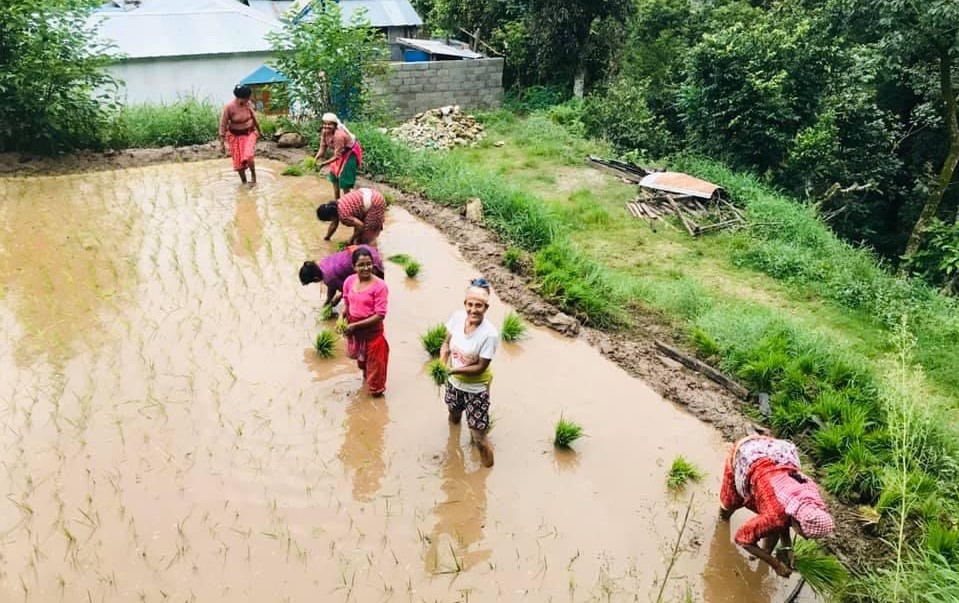
Explaining further, Sandesh Poudel, an agricultural engineer based in Chitwan, says along with the rainfall, the practice of rotational crops also makes a difference when farmers start planting again. “Only after clearing the previous crop, they will start the new process. And, this can happen after Asar 15 too. Many farmers in Chitwan have already planted on their farms, while others are preparing their plantations for the season.”
So, if the plantation depends on the farmers, what if they miss the opportunity this time?
Sapkota, who works on her land in Netrawati Dabjong rural municipality-4 of the Dhading district, remembers how in a recent year there was no rainfall in Asar (mid-June to mid-July) and the rainfall and subsequent plantation only started next month. The year held grave consequences, she says. “That year, the harvest decreased by more than half in comparison. And those who depended on natural rainfall and solely on agricultural income got hit hard.” So, although a few days before or after Asar 15 do not make that much of a difference, according to her, lack of rainfall and delay can be crucial.
Hence, Asar 15 has been set as a date to celebrate the entire planting season, according to farmers and experts. Because plantation in Nepal largely depends on rainfall, no one can be certain when most farmers plant rice every year, hence the date has been fixed as a default.
Factors affecting farming

For example, this year, the country has witnessed enough rainfall, even in the pre-monsoon period, encouraging early plantation. In fact, Nepal is said to witness more rainfall this year.
Kafle says early monsoon means early plantation and the farmers can expect more or at least early harvest. “We cannot say how much rain is too much right now. Farmers can expect more rain this now, hence, it is the right time for plantation.”
“Heavy rain and hailstorms will not affect the plantation itself. But, once the plants bear flowers then it becomes a problem as it can destroy them. Rice plantation, however, can get affected by external factors like flood, landslide induced by rainfall,” he adds.
Besides, the harvest depends on the temperature, water availability and soil strength as well as if the roots get enough oxygen or not. The preliminary phase of plantation is also crucial as weeds and pests can destroy the crops. That is why farmers spend months later tending to their farms.
Among the Jyapus, a sub-community of the Newa community, the fieldwork is taken seriously and they commit to it. As this practice is rigorous that the farmers abstain from celebrating any festival and even mourning the dead. The community refers to this culture as sinajya (commonly understood as to work hard, in a do-or-die situation). They also celebrate Asar 15 vigorously.
Dahi-chiura: Another important norm
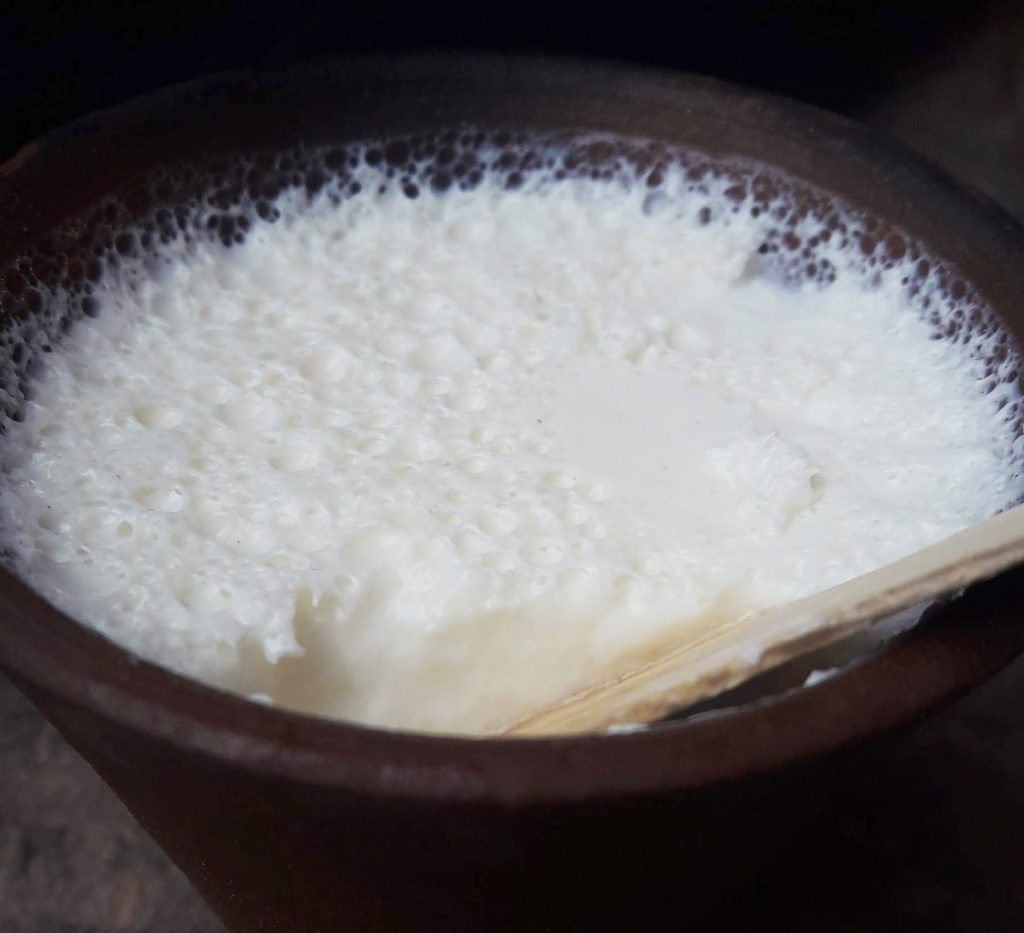
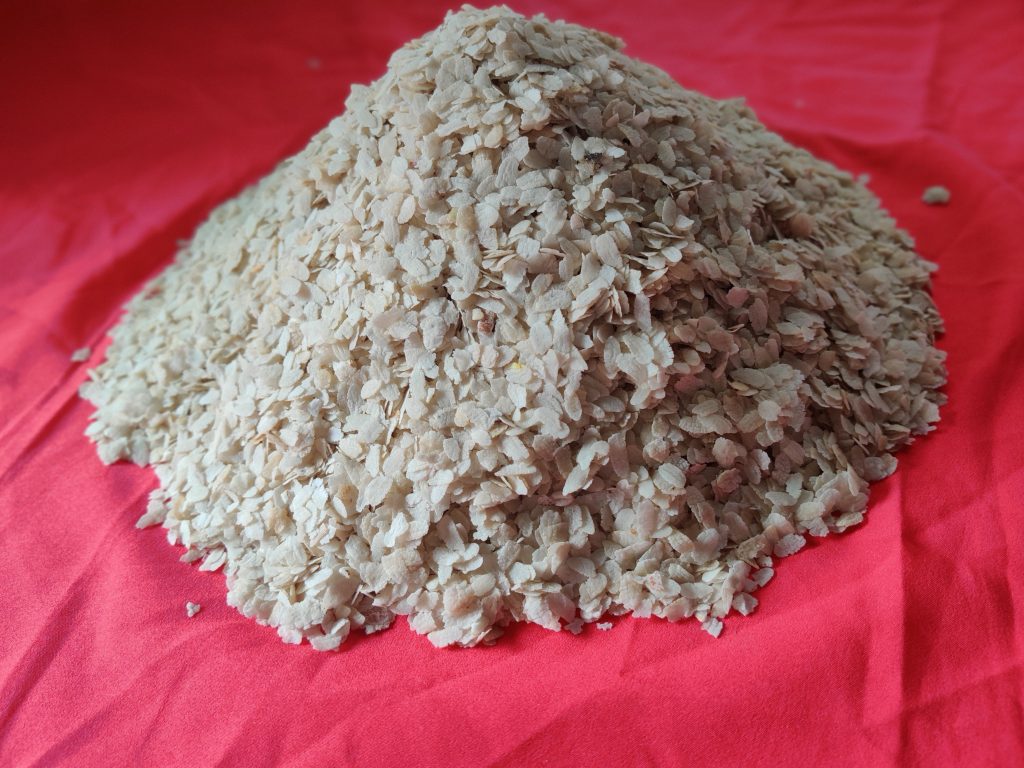
On this day, it is also customary to eat dahi-chiura (a mixture of curd and beaten rice) on this day. Even if the plantation is not done on Asar 15, for reasons discussed above, farmers and locals still eat this combination to mark the day. Dahi-chiura is culturally distributed by the hands of the elder persons.
Eating dahi-chiura is considered important this day as the body gets energy from this food. For those tired farmers, the combination provides strength, eases and speeds up the rest of the farming.
Dahi-chiura is also called a complete food and an anytime snack, a dessert in bhoj or feast. The combination is also good for digestion, immunity, infections, and stomach distress. Other than that, it is also given to expecting mothers by older women, cultural equivalent to baby showers today, also, to new mothers for strength and immunity. Even on birthdays, it was common for people to eat it.
One can even find mentions of dahi-chiura eating culture in the Hindu epics of Ramayan and Nepala-Mahatmya of Skanda Puran. After Ravan abducted Sita, Ram, Lakshman and Hanuman came in her search. They reached a river flowing south of current Bhaktapur and hungry, they were recorded eating dahi-chiura on a banana leaf. Some say the same culture has been continued to date as eating dahi-chiura on Asar 15.
Other evidence can be found in the historical documentation of feasts organised by Lichhavi and Malla kings in their courts.
First published in 2022.






